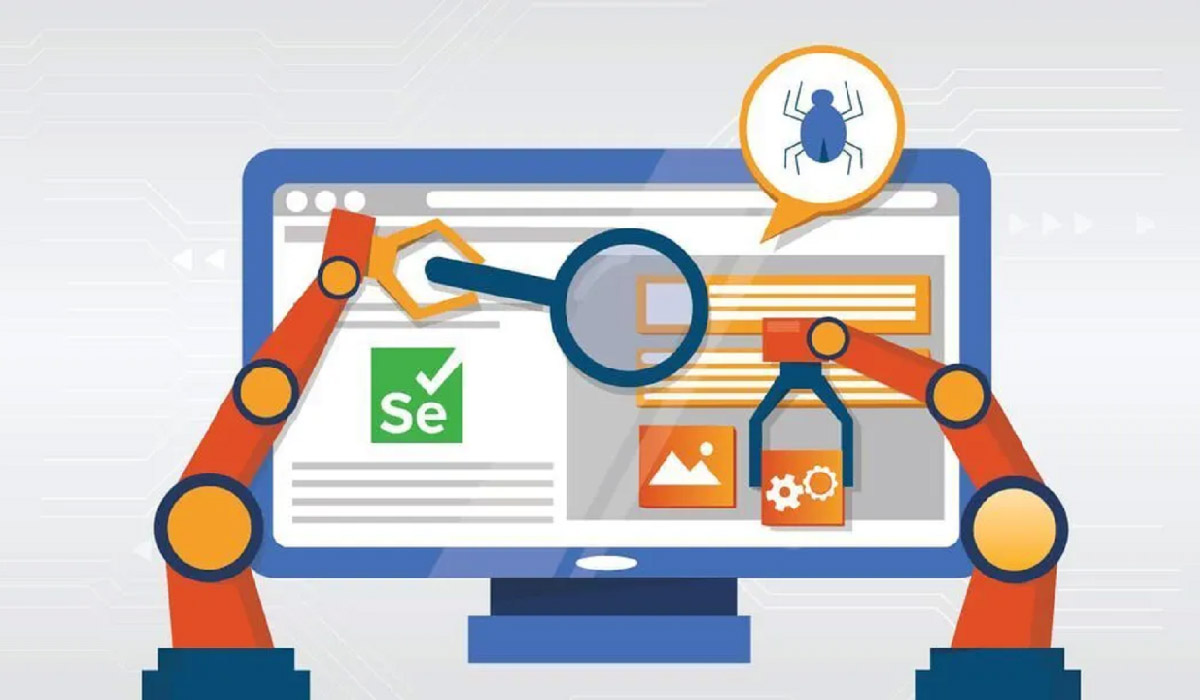People who work in web development and testing frequently wonder what is Selenium WebDriver and how it helps with test automation. It is the foundation for flexible and accurate browser automation and testing. Selenium WebDriver is a robust tool to automate web browsers, allowing users to interact with web pages, making automation faster and more reliable. It makes sure that web applications function flawlessly across various environments.
The true power of Selenium WebDriver lies in its ability to deal with complex, real-world testing scenarios. For enhanced test automation, mastering WebDriver’s extensive features and integrations is necessary to ensure comprehensive efficiency, scalability, and test coverage.
In this article, we will go through some Selenium WebDriver best practices for efficient test automation. This will include what Selenium WebDriver and its architecture are, along with their benefits, and how they work. So let’s start.
Understanding Selenium WebDriver
Selenium is an open-source and automated testing framework, extremely beneficial for web application developers. It has different components, each tailored to various Selenium automation testing requirements. Selenium WebDriver is one among them.
Python, JavaScript, and Java are just a few of the programming languages that Selenium WebDriver supports. It is a robust automation tool that gives users a lot of flexibility when writing test scripts. The tool is useful for software and quality assurance experts since it provides cross-browser and cross-platform testing. It also equips a programming interface and interacts with web browsers, permitting users to automate, navigate web pages and browser actions, navigate web pages, and perform functional testing.
Selenium WebDriver architecture
Selenium WebDriver has four main components:
Selenium Client Libraries- Selenium supports various programming languages. The client libraries deliver APIs that allow testers to interact with Selenium and manage the browser using the preferred programming language.
W3C Protocol- The World Wide Web Consortium (W3C) protocol acts as a common language that allows web browsers and automation to interact. The W3C protocol allows for direct communication between test scripts and browser drivers, without JSON wire protocol. It allows for more consistent automated Selenium testing across different browsers, as both Selenium WebDriver and web browsers use the same protocol.
Browser Drivers- Browser Drivers are executable libraries or files specific to each browser. They serve as mediators between the Selenium User Libraries and the actual browsers. The browser drivers select a communication channel with the browsers to automate user interactions.
Real Browsers- Real browsers are web browsers like Chrome, Firefox, Safari, etc. These real browsers are controlled and launched by the browser drivers. This is done based on the commands received from the Selenium User Libraries.
Benefits of Selenium WebDriver
A few of the benefits of Selenium WebDriver are mentioned below:
Open-source- It is affordable for automating web apps because it is open-source and free to use.
Support for several programming languages- It offers testers the option to choose the language that best fits their needs by supporting several programming languages.
Mobile testing compatibility- Since Selenium WebDriver can automate iOS and Android mobile apps using extensions like Appium, it can be used to test both web and mobile applications.
Cross-browser compatibility- Various browsers, such as Firefox, Chrome, Safari, and others, are supported by Selenium WebDriver. Because of this cross-browser interoperability, testers can confirm how thick web apps are in various browsers.
Numerous browser activities- Testers can type, click, submit forms, handle warnings, and perform many other actions from their browser. Because of this, it may be used for comprehensive web application testing.
Active element handling- Mechanisms to handle dynamic web fundamentals help testers deal with asynchronous web applications and guarantee stable test implementation.
Integration with testing framework- Integration with different testing frameworks like JUnit, NUnit, TestNG, and many more permits for structured test association, representative test implementation, and reporting capabilities.
Integration with Continuous Integration(CI) tools- Selenium WebDriver can be integrated with CI tools. This integration enables the automatic implementation of test suites upon code commits. This helps ensure continuous testing in the development channel.
Platform independence- Selenium WebDriver is platform-independent, meaning that developers can use it on a range of operating systems.
Parallel test execution- Support for parallel test implementation allows testers to run multiple tests simultaneously. Various automation testing platforms support this feature, and the LambdaTest platform is one among them. The platform supports different automation testing tools and frameworks, including Selenium, enabling seamless automation of browser tests. It permits testers to run parallel tests across various browsers and operating systems, reducing testing time.
However, understanding what is Selenium before using it with LambdaTest is essential. It is an open-source framework used for automating web browsers. It permits testers to write code that can interact with browsers, guaranteeing web applications work as expected across different platforms and environments.
Lambdatest is an AI-native test orchestration and execution platform used for testing web and mobile applications manually and in an automated way at scale. This platform permits testers to perform mobile website testing in real time by providing access to a cloud Selenium Grid of more than 3000 environments, real mobile devices, and browsers online. Thus, offering scalability and flexibility required for modern testing, enabling test teams to deliver high-quality applications faster.
This platform provides capabilities like automated visual regression testing to detect identical visual changes in web applications, and testing the web application’s performance under different network conditions. Its geolocation testing feature allows testers to automate tests that mimic browsing from different geographical regions. This is crucial for evaluating how people from various countries are shown with localized material, including language.
It also offers smooth integration with well-known CI/CD systems like Jenkins, CircleCI, and Travis CI, as well as Jira, Slack, Trello, and other tools for effective issue tracking.
How does WebDriver for Selenium operate?
Selenium WebDriver is like a mediator that allows the code to communicate with different browser drivers. The test cases are designed using element locators, which are located using the Selenium element locator technique. The actions are then performed on those elements by utilizing Selenium WebDriver. In a nutshell, Selenium WebDriver works as follows:
- A tester writes an automation test script targeting a typical browser driver.
- Before executing test cases, the driver initializes the server.
- The driver performs the actions one by one once the browser initializes. Then, through its driver, the browser starts collecting requests.
- The test commands are transmitted through HTTP, and the response is received via W3C wire protocol to the driver.
- The browser driver receives the data. If validation is successful, it shares those actions with the browser via HTTP.
- The errors are communicated to the client in case the validation is rejected.
- Once all the actions are completed, the browser shuts down, and the driver communicates the results to the client.
Limitations of Selenium WebDriver
Although Selenium WebDriver is powerful, it has some limitations that testers must be aware of. Some of them are mentioned below:
- Selenium WebDriver does not support desktop applications. Though it can handle some desktop component interactions, it isn’t ideal for testing desktop applications.
- Being a maintenance-heavy framework, it is sometimes difficult to scale.
- Testers rely on plug-ins like JUnit and TestNG for test reports, as Selenium WebDriver does not include any built-in reporting capability.
- AJAX or jQuery-based applications that alter or refresh their content can cause trouble for WebDriver. The cause of the Stale Element Reference Exception is that WebDriver might attempt to interact with an element before it is loaded or after it has been unloaded.
- It isn’t ideal for testing mobile applications. Also, it only partly supports advanced user motions like pinch, zoom, and swipe.
- Programming languages like Java, C#, and Python in-depth familiarity with the DOM and web technologies, are required for writing Selenium WebDriver scripts.
Best practices for using Selenium WebDriver for efficient test automation.
Some smart practices of using Selenium WebDriver for advanced test automation are mentioned below:
Use descriptive and consistent naming conventions- Testers can use meaningful names for test methods, classes, and variables. This makes the test scripts more readable and easier to understand. Testers should also stick to a consistent naming convention throughout the test scripts.
Implement waits properly- Using explicit waits for conditions like clickability or element visibility makes tests more readable. Avoid using Thread.sleep() as it introduces unnecessary delays and makes tests slower.
Select the right locators- Developers can use the most specific and stable locators to identify web elements and avoid using complex or brittle XPath expressions. They should use CSS selectors instead of XPath, as they are generally faster and more readable.
Use Page Object Model(POM)- Implementing the Page Object Model helps to keep code organized. Each page of the application should have its own class that handles interactions.
Employ data-driven testing- Selenium WebDriver guarantees that the same test scripts may be used with various data inputs by keeping the test logic and input data separate. This preserves data-driven testing. This approach helps to improve test coverage and reusability by allowing testers to run tests with several datasets and validate the application’s functioning under various data situations.
Modularize test code- This minimizes duplication and facilitates test maintenance by dividing code into reusable methods or functions for tasks like logging in, page navigation, etc. Users can implement the Page Object Model design pattern to separate page-specific operations and elements from tests.
Handle browser-specific actions wisely- It is important to ensure that automation handles browser-specific quirks appropriately using WebDriver’s built-in methods.
Organise tests- Organising tests into suites and using testing frameworks like TestNG or JUnit helps to manage and execute tests systematically.
Parallel execution and test scalability- Use Selenium Grid as it helps to run tests in parallel across multiple browsers, reducing execution time and helping scale tests.
Incorporate logging- Logging libraries make debugging easier when something goes wrong, as they record events within the tests.
Optimise browser sessions- Minimizing the number of browser sessions and browser restarts helps to speed up the test suite. Testers can reuse sessions when possible.
Use headless browsers for CI/CD- Utilizing headless browsers, such as Chrome or Firefox, can speed up the execution of CI/CD pipelines.
Version Control- To maintain WebDriver binaries and versions and guarantee compatibility, version management solutions such as WebDriverManager help with this.
Exception Handling- Ensuring that automation scripts are reliable, stable, and able to handle unanticipated issues that might occur during test execution depends on the exception handling feature of Selenium WebDriver.
Conclusion
To sum up, the secret to maximizing Selenium WebDriver’s capabilities and conquering the difficulties associated with testing contemporary online applications is to become proficient in complicated test automation. Selenium WebDriver’s sophisticated features have the potential to greatly increase test automation’s scalability and dependability. Headless browsers, CI/CD pipelines, and tools like TestNG or JUnit for quicker feedback loops and more comprehensive test coverage may all be combined with the automation process to further improve it.
For More Information, Visit Megamagazine














